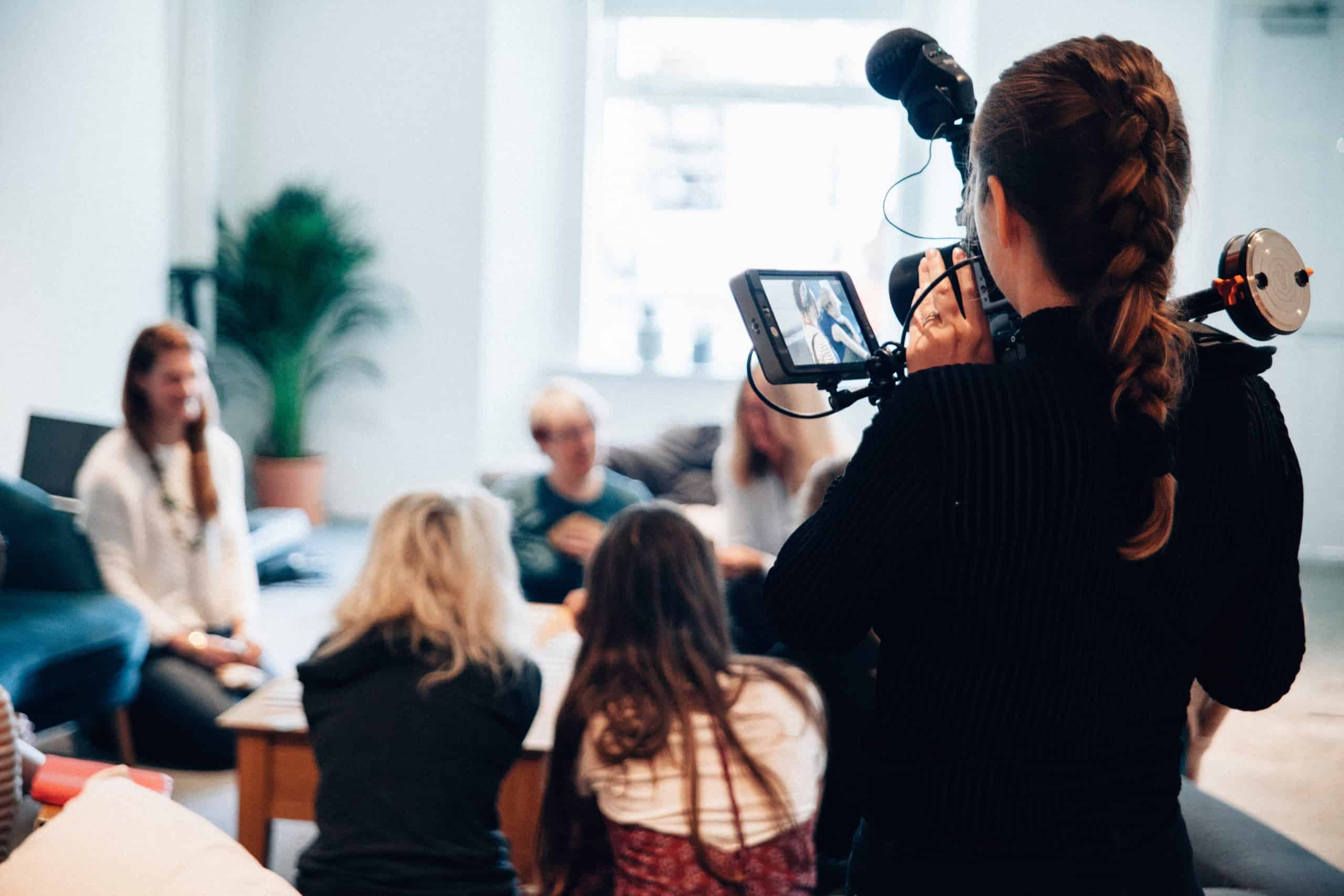It is important during these times that healthcare practices have an effective public relations strategy that can quickly and authoritatively establish your practice’s expertise with local referring physicians and patients. There is a huge demand for new information about health in the United States and around the world. Consider that Google handles one billion questions about health each day. That’s 70,000 health questions every minute – meaning there are plenty of newsrooms and blog writers looking for a physician’s opinion to meet their deadlines.
Coupled with the fact that technology has changed the way traditional news media and PR outlets work, it’s simultaneously easier than ever to get your message out and more challenging to reach a broad audience at once.
In this article, we’ll discuss and break down six strategies you need to know about public relations and your practice in today’s tech-forward environment and then discuss what happens when a PR push doesn’t deliver as you’d hoped.

Photo by Gabrielle Henderson on Unsplash
1. Crafting Your Pitch
The road to traditional media expert glory all starts with successfully crafting your public relations pitches. A public relations pitch involves putting your story idea into a news release or pitch letter and then sending off your idea and convincing various news media to cover it.
A good rule of thumb is to focus your efforts on your local news market because it’s easier to win coverage there than at the national level.
As you craft your pitch, ask two simple questions. “Why would the general public care about this story?” and “What is the message I am trying to get out?”
Consider that you really have two audiences you are trying to reach with your news story idea. The first audience includes the assignment managers, producers, editors, reporters, and newsroom managers, who can either push your news release up the food chain for a closer look or not. Your second audience is the general public if your pitch makes it that far.
Craft it carefully. Keep your release brief and focused, and make sure the headline grabs the attention of the TV assignment desk worker or newspaper editor. He or she will only spend several seconds looking at it before deciding whether to delete it. Answer the “who,” “what,” “when,” “where,” and “why” quickly, and include the day, time, and location for the news conference or event.
The quote in your news release from your team’s expert must reflect one of the main points you are trying to make. That way, if your news release gets published as it is, you got your team’s expert on the news, offering an insightful comment.
Remember to utilize your technology tools here as well. Set reminders to follow up with the reporters from your phone or create specific calendar invites with notes on the last message you received from the newsroom.
Suppose you’re unsure where to start and don’t have time to develop a list of reporters, consider using a service like Help a Reporter Out (HARO). HARO connects journalists with a database of potential sources for upcoming stories and opportunities for sources to secure media coverage. You can use HARO to select the areas your experts would like to cover and respond to open pitches about various topics.
You may also want to consider using a tool like Google Trends or BuzzSumo to identify what content people are looking for. By exploring what the world is searching for (Google Trends) and what they’re clicking on (BuzzSumo), you’ll have a leg up when it comes time to determine what topics and pitches will really resonate with your pitch recipient.
For example, if the world is looking for COVID-related content, and you’re able to provide a local expert to discuss how that relates to a particular subspecialty, orthopedics, or fertility as an example, local media may be more willing to engage with your pitch.
2. Develop Three Talking Points
Your news release or pitch should focus on three main points, and they will become your three talking points when you land that interview on the news. Your goals are to work on all three talking points and to make sure you stay on message.
If you do get an interview, go into your it knowing you rarely get as much time as you would like to tell your story. You have to become an expert at telling it quickly. Practice your three talking points so that you can repeat them in 10 to 15 second sound bites for the news.
Interviews for newspapers and digital publications may feel more laid back because there is no camera in your face but stick with three talking points if the reporter’s editor shortens the story.
What happens when the news anchor strays off the topic in the middle of your live television news interview? Don’t be caught thinking, “Wait, what?”
Maybe your interview is the fourth out of five. She is doing that half hour, and the anchor hasn’t had time to prepare. Maybe the anchor doesn’t know about that topic, so they ask whatever comes to mind. Your job is to roll with it, keep your composure, and stay focused on your three talking points.
We talk to our public relations clients quite a bit about “the redirect.” Sometimes the news anchor is playing “gotcha,” They are trying to make you play defense. You must stay composed and deploy the redirect, always returning to your talking points.
What happens when the anchor asks you an unfriendly question? You should acknowledge it for just a few seconds, and then, you guessed it, redirect back to your talking points. You say, “We are looking into that, and we will have that information soon, but what your viewers also need to know is…”

Photo by Roman Kraft on Unsplash
3. Push Through the Newsroom Maze
Maybe the biggest challenge to getting your story idea covered is pushing through the newsroom maze. Newsrooms are chaotic places, and you have to weave and bob through the chaos to connect with someone who can advocate for your news release.
The first hurdle to clear is knowing when to connect. When you call to pitch your story, you don’t want to hear, “I’m sorry. You caught me at the worst possible time.”
It’s important to know who the newsroom decision-makers are, locked away in meetings and when they are up against their most stressful deadlines. If you call the TV newsroom’s assignment desk five minutes before a newscast or during the middle of breaking news, they might remember you for all the wrong reasons.
On the other hand, if you don’t call after you send a news release, you’ve only done half of your job. Call the news desks at the appropriate time to make sure someone puts a pair of eyes on your news release. Otherwise, it could get lost in the endless stream of emails, phone calls, interruptions, and redirections.
Building relationships with editors, health reporters, and story planners is a strong strategy. Guest Bookers can be great resources for you as well. A guest booker’s job is to find interesting guests to do news interviews. If the book you as a guest, you can help them by getting them the information quickly, sending them talking points, Skype addresses, cell phone numbers, and handling logistics to make their lives easier.
Want a great strategy for getting your expert locked in on speed dial when the news producers need to find someone quickly to interview? If your team is easy to work with and you always say, “Yes, I can do that interview,” they will keep calling you. The rule is never to say no.
4. Time Your Event to Win Coverage
You have to time your event to win coverage. Set up your news conference at a time when reporters can actually get there. It’s tempting to have a relaxing event with a large crowd during the weekend, but if you really want news coverage, think weekday mornings.
Why? Because newsroom staffs are shrinking across our country, and they often don’t have enough reporters or videographers to cover your weekend event.
Schedule your story or news conference at 10:30 a.m. or 11 a.m. on a weekday, when more reporters and videographers are working. This gives the dayside news crew time to attend their morning meeting and get to your event. If your event is brief, you might get covered on the noon newscast and again on the 5 and 6 p.m. newscasts.
You need to understand “cut-off times.” A TV news crew has two different tasks to get a story on the news on time.
- Part A of their job is to find the person they are going to interview quickly. This is why you want to be on speed dial.
- Part B is to put the story together and to be ready to do their live appearance in the newscast or to make sure their edited story gets fed back to the station on time.
So the crew has to interview the person, pick the video clips they will use, write the story, edit the story, set up their live shot, and be in place for their appearance in the newscast. The clock never stops to help them. You want to be available as soon as possible, as close to them as possible, and with the least amount of drama possible.

Photo by Vanilla Bear Films on Unsplash
5. Join the Newsroom Team
Those shrinking newsroom staffs mean you can join the newsroom team for a day by shooting video for them. Our clients have two minutes of video edited and ready to go. When they are booked as guests on the news, we send that video to the news media to make the interviews better.
Often, a news agency that could not get to your news event will use cell phone video on the news if you shoot it well and email it to them. It would be best if you planned to shoot a video at your event and have someone email it to the newsrooms.
Becoming a de facto web producer is the last line of defense for your story pitch. The news agency did not cover your event, but you took great pictures or captured fantastic video footage. Email the media you’ve taken to the news agencies with your original news release, call them, and ask them to forward the email to their web producer to post a story online.
6. Using Technology to Create Your Own Story
Today, everyone can be a reporter because we all have a good camera in our pockets or purses at all times. As empowering as that is, it also makes breaking through the clutter that much more difficult.
So, is it possible to leverage technology to create your own PR if a news outlet won’t pick it up?
Absolutely.
If you have a story you want to share or you think is newsworthy, remember you’ve spent years cultivating a fanbase on social media, and they’re looking for a piece of “thumb-stopping” content to interact and engage with. Film or write your content and post it on your owned media assets like your website, your social media feeds, and send it out to your email lists.
Using your own audience is also a solid gauge of how good the story actually is. If you’re going to create your website post, you think the audience won’t care. What would make it work for a larger audience that has never heard of your practice? But, if you think your audience will really respond well, it certainly makes sense to post your story and create your own news cycle.
Use These Strategies to Grow Your Practice
These six strategies you need to know about public relations and your practice will help you win coverage and position your physicians as authorities in your region.
Having effective public relations strategies in place can work in numerous ways to establish your group’s expertise and attract more patients to your door, instead of giving all the glory to the Google search.










